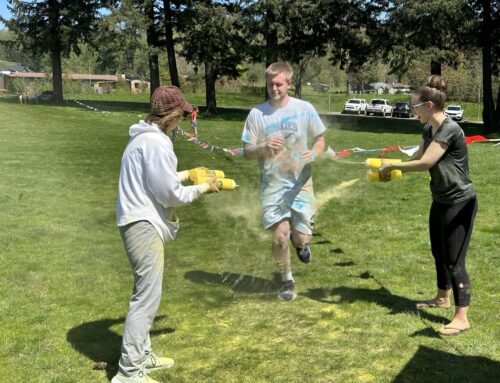Jemtegaard Middle School sixth grade science students in Mona Davies’ class took advantage of having their very own outside laboratory just steps away at Gibbons Creek as they prepare to participate in the annual Watershed Congress in May.
Watershed Congress is the culmination of the Watershed Monitoring Network, sponsored by the City of Vancouver and the Clark County Environmental Services Clean Water Program. Each year the Network supports more than 3,000 students from 25 local Clark County schools who monitor neighborhood streams, rivers, wetlands and bioswales.
The JMS students are monitoring the Gibbons Creek watershed for phosphates, nitrates, turbidity, dissolved oxygen, pH, temperature, and macroinvertebrates. For Davies, this lesson is also important for students to have the opportunity to do some of their science work outside. “I feel that kids do not get outdoors enough,” she said. “They do not even realize what is outside right here in their backyards.”
The focus of the Watershed Monitoring Network is on education, discovery and stewardship and involves students ranging from kindergarteners to 12th-graders. “This project and the Congress works to connect students to their actions and how it can affect the conditions of local streams,” Davies said. A program goal is to help show students that work to protect local waters is not just up to the Cities and Counties, but is up to everyone as individuals to help keep them clean and healthy.
At Watershed Congress, students present their water monitoring findings and engage in problem-solving sessions with other students and interested educators, community members and professionals.
“We are monitoring the watershed here at Gibbons Creek and later in the spring the class will attend the Congress and also travel to Bonneville Dam and compare our data to theirs,” Davies said.
During a break in February rain showers, Davies’ class visited Gibbons Creek and made observations as a part of their data collections. “It is so nice to be outside and get to walk out in nature,” said JMS 6th grade student Raven Eckstrom during that outing. “We could look at a picture in the classroom but it is not really like being there. You can’t feel it. Being right here gives you a better perspective.”
Davies agrees saying, “Technology is really a draw these days with education. I like to get kids outdoors just as much as possible. I feel it is important to get them outside and interacting with nature.”
Plans are currently underway for a new JMS and a new elementary school to be constructed at the JMS site. “We are looking forward to getting out and using our natural areas even more when the new schools are built,” said David Cooke, JMS Principal.





